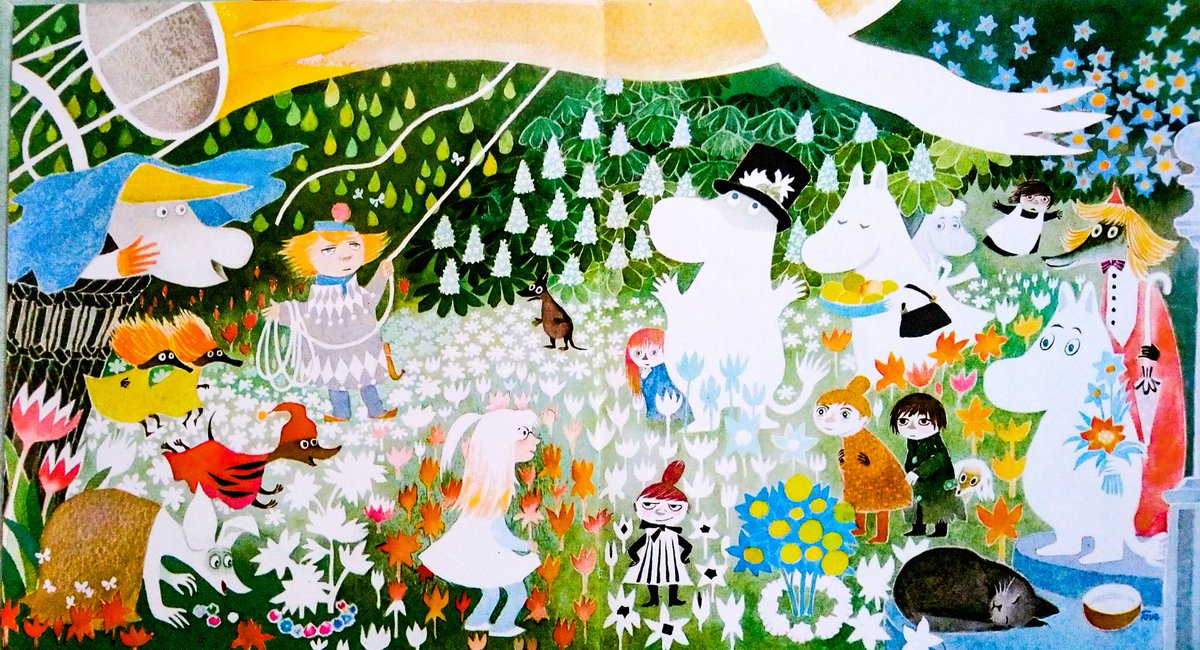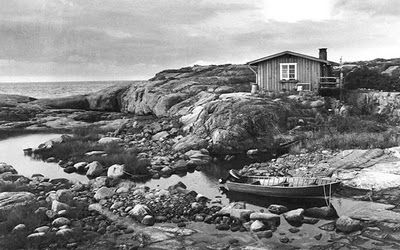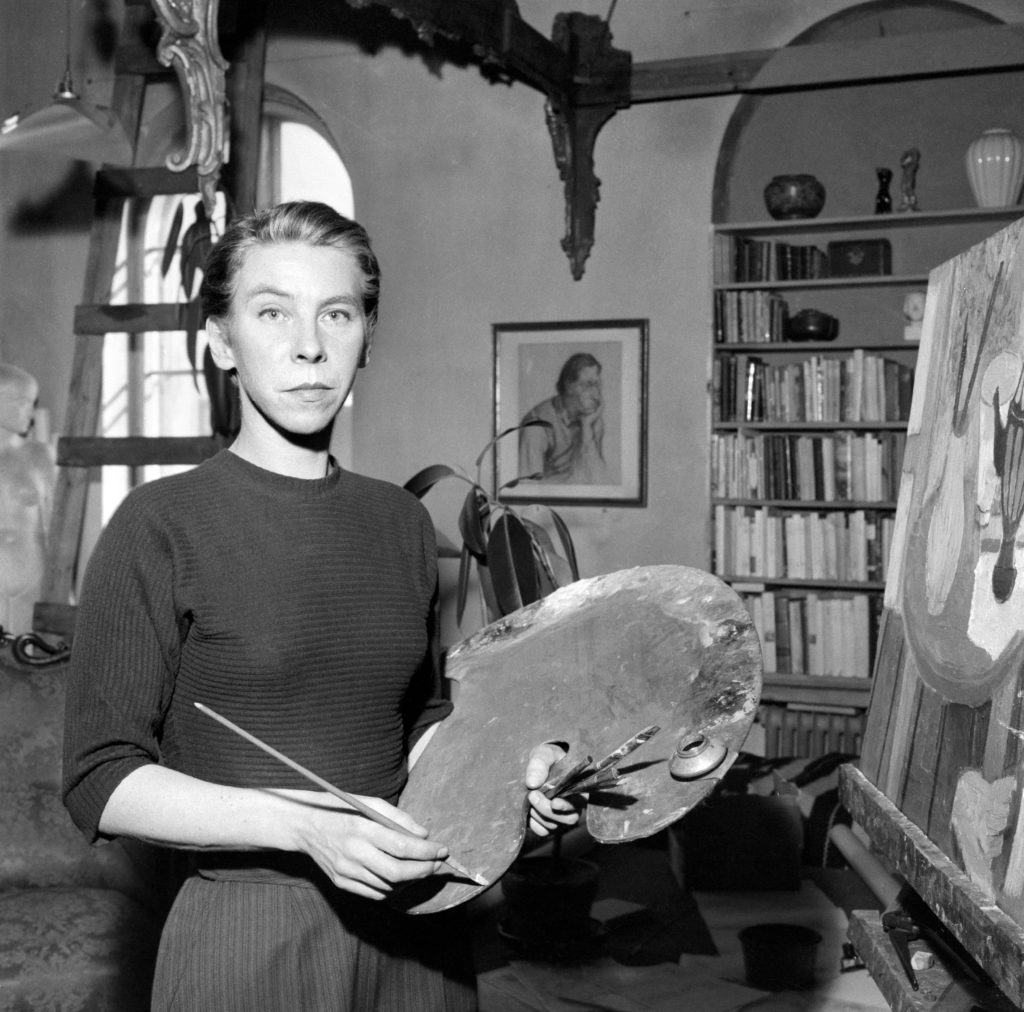The Origin of Moomins and the Great Flood
“I want to be a wild thing, not an artist.” –Tove Jansson
“The unrealistic nature of these tales (which narrow-minded rationalists object to) is an important device, because it makes obvious that the fairy tales’ concern is not useful information about the external world, but the inner process taking place in an individual.
–Bruno Bettelheim, The Uses of Enchantment: The Meaning and Importance of Fairy Tales
Moominland is an episodic picture-book, comic-strip, and middle-grade reader novels about fairyland adventures. Set in a magical universe, the series was created by Finnish artist-author Tove Jansson, a winner of the 1966 Hans Christian Anderson Award, an international award called: “The Nobel Prize in children’s literature.”
Born August 9, 1914, Tove Jansson was raised by artist parents and her biography is a direct path into Moominland whose discovery she set upon as a small child.
Every summer the Jansson family vacationed on the island of Bildö in the Stockholm archipelago, and it was there Tove Jansson began to draw before she could speak or read. Bildö was an escape for Tove and her family, and represented the ultimate in freedom.
Moominvalley is an island modeled after Bildö and set in a similar isolated area surrounded by the sea, filled with unusual creatures and wild forests with strange glow-in-the-dark plantlife.
As a child, Tove drew the Moomin creature for the first time on an outhouse wall on Bildö island after a heated argument with her brother Lars over the philosopher Emmanuel Kant. Tove was angry and hoped to draw the ugliest and angriest thing she could imagine. This became an early depiction of a Moomin which looked more like an upright black alligator/monster compared to the rounded white hippo-shaped creatures they morphed into over time.
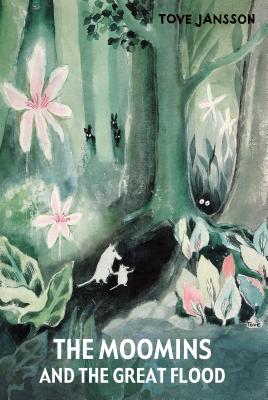
The Moomins and the Great Flood, 1945
Stories of Scandinavian trolls told by an uncle and her family’s summer island contributed to the Moomin mythology. Reading and books were an essential part of Tove Jansson’s childhood “As a child she used to bring a flashlight with her to bed and read under the covers while the others slept, she simply could not keep herself from finishing an exciting story,” said her niece Sophia Jansson, from an interview in The Complete Works of Lars Jansson
As war stormed across Europe, Jansson set her first Moomin story down as the The Moomins and the Great Flood , a picture book published in 1945. In a preface to a 1991 Swedish reprint of the book, Jansson recalled, “It was the summer of 1939. One’s work stood still; it felt completely pointless to try to create pictures… What followed had to be a fairytale.”
The Moomins and the Great Flood is an origin story and good place to begin the series. In later books the Moomins confront comets, martians, strange forest creatures, storms and other apocalyptic scenarios. The Moomin stories are a guide to dealing with disaster through simplicity, reason and curiosity–a tale for our times. No matter how upsetting the calamity, the Moomin stories are always resolved with peaceful tranquility– and a feeling of Hygge.
Moomins are an outcast group of trolls living in harmony with nature. Their ancestors once lived behind wood-burning stoves in human homes, but since they’ve been replaced with electric ovens, they now find comfort and adventure in a three story house, built by Moominpappa to look like a stove. Moomins are outgoing, independent, kind-hearted, and innocent. Moomins are at odds with human invention and industry, and they love to keep warm and hibernate.Trouble often ensues whenever Moomins cross the path of people.
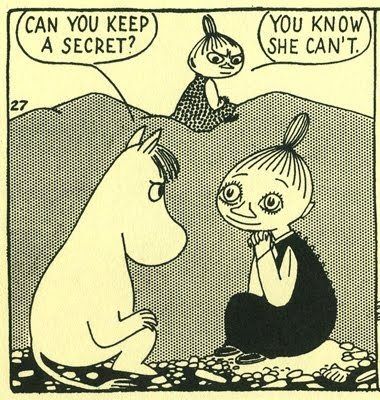 While young children will enjoy the cuddly characters and comedic hyjinx, adults will see a fairyland that mirrors some of our own upsetting spaces, with its dark hidden corners and a few grotesque and dangerous Groke monsters lurking in the woods.
While young children will enjoy the cuddly characters and comedic hyjinx, adults will see a fairyland that mirrors some of our own upsetting spaces, with its dark hidden corners and a few grotesque and dangerous Groke monsters lurking in the woods.
The whiteness and transparency of Moomin creatures lend them a ghostly supernatural look. Shaped like a Hippopotamus with large snouts, Moomins are graceful and balletic in movement. Moomin valley is a strange utopia.
Each creature in Moominland has a recognizable personality with character traits that grow deeper throughout the series– this was part of Tove’s genius. The main characters are; Moominmama with her stripped apron and magic-bag purse that always contains the right object to fix any problem, Moominpappa; a dreamer and poet in a top hat, Moomintroll; always positive, hopeful and sweetly naive, and his best friend Snufkin; a drifter, philosopher and musician, Snorkmaiden; who is not a Moomin, is Moomintrool’s love interest and Little My; a mean-spirited abrasive tomboy who lives with the Moomins. A complete list of inhabitants in the Moomin books are noted in this: List of Moomin Characters.
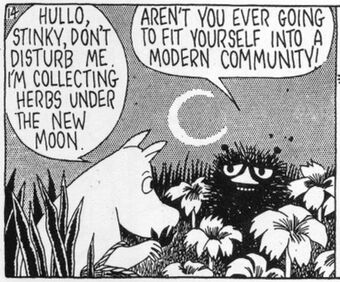 Jansson’s fairytale, like Alice in Wonderland, is a self-contained slightly unmoored reality, where traditions are overturned. Her work questions authority, gender, patriarchy, work, education, politics and capitalism. By using comedy, friendship and imagination, Jansson lampoons society and convention. She empowers her audience to follow the wildness in nature, and to closely observe emotions and change. An air of existentialist melancholy pervades the series but also a pioneering spirit of curiosity. The Moomins are different and proud of their offbeat family and lifestyle. “Still, if her stories contain some of the harshness of life, they always end happily, with a joyous return to Moominvalley, family and friends all safe. —The New Yorker, Inside Tove Jansson’s Private Universe
Jansson’s fairytale, like Alice in Wonderland, is a self-contained slightly unmoored reality, where traditions are overturned. Her work questions authority, gender, patriarchy, work, education, politics and capitalism. By using comedy, friendship and imagination, Jansson lampoons society and convention. She empowers her audience to follow the wildness in nature, and to closely observe emotions and change. An air of existentialist melancholy pervades the series but also a pioneering spirit of curiosity. The Moomins are different and proud of their offbeat family and lifestyle. “Still, if her stories contain some of the harshness of life, they always end happily, with a joyous return to Moominvalley, family and friends all safe. —The New Yorker, Inside Tove Jansson’s Private Universe
The series is more defined with the chapter books, with some parallels to Frank L. Baum’s Oz books, yet are totally unique. The dark satire of the Moomins would be at home in “Fractured Fairytales” as seen in the Rocky and Bullwinkle TV series. The novels make excellent read aloud books as they move at a fast clip through short chapters. The Moomins weird and funny fairyland, is filled with mysterious wonder, and although recognized and highly praised in Europe, UK and Japan, they’ve had a slow time catching on in America.

THE MOOMIN NOVELS
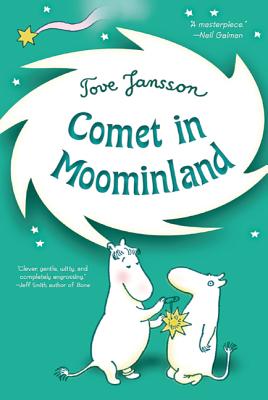 Moomin chapter books are some of the most rewarding in the Moominverse. Each are filled with odd details, background info and character development. Suitable for middle-grade readers or adults, and illustrated with both full page line drawings and a generous assortment of spot-illustrations. Tove’s writing is loved for its whimsy, lightness and subtlety, perfectly matched by the simplicity of her line drawings.
Moomin chapter books are some of the most rewarding in the Moominverse. Each are filled with odd details, background info and character development. Suitable for middle-grade readers or adults, and illustrated with both full page line drawings and a generous assortment of spot-illustrations. Tove’s writing is loved for its whimsy, lightness and subtlety, perfectly matched by the simplicity of her line drawings.
Comet in Moominland was the second Moomin book, published in 1946. It follows the apocalypse of The Great Flood, however this time with a threat from outer space targeting planet earth. The characters and drawings are more finished, yet also more rigid and highly developed.
“There is, in short, everything in the Moomin books: giant comets and secret caves and tree houses and stilts and magic-carpet clouds and amusement parks run by despotic practical-joking kings and time machines and ski instructors.” –Harper’s
“We need Moominland for its gentle pace, its sense of beauty and awe, and its spirit of friendliness and empathy now more than ever.” –The Horn Book
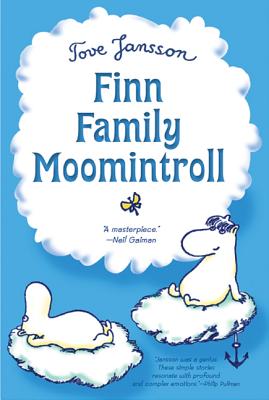 Finn Family Moomintroll “(original Swedish title Trollkarlens hatt, ‘The Magician’s Hat’; US edition The Happy Moomins) is the third in the series of Tove Jansson’s Moomins books, published in Swedish in 1948 and translated to English in 1950. It owes its title in translation to the fact that it was the first Moomin book to be published in English, and was actually marketed as the first in the series until the 1980s.
Finn Family Moomintroll “(original Swedish title Trollkarlens hatt, ‘The Magician’s Hat’; US edition The Happy Moomins) is the third in the series of Tove Jansson’s Moomins books, published in Swedish in 1948 and translated to English in 1950. It owes its title in translation to the fact that it was the first Moomin book to be published in English, and was actually marketed as the first in the series until the 1980s.
The 1961 English publication features a foreword “by Moominmamma”, where she explains the nature of Moomins for fear that English children may not have heard of them; she also apologises for her “rottn” English. Otherwise, the book was translated by Elizabeth Portch.” –Wikipedia
The novel forms the basis of episodes 1–8 in the 1990 TV series. A total of nine novels exist that include;The Exploits of Moominpappa, Moominsummer, Madnessin Moominland, MidwinterTales from Moominvalley, Moominpappa at Sea, Moominvalley in November.
“These charming fantasies are propelled by a childlike curiosity and filled with quiet wisdom, appealing geniality, and a satisfying sense of self-discovery.” –School Library Journal.com
“If you had no shame reading Harry Potter on the subway, there’s no need to hide Tove Jansson’s witty, whimsically illustrated Finnish series.” –Daily Candy
“The Moomin books make for both splendid bedtime read-alouds and solitary savoring.” –Wall Street Journal
THE MOOMIN COMICS

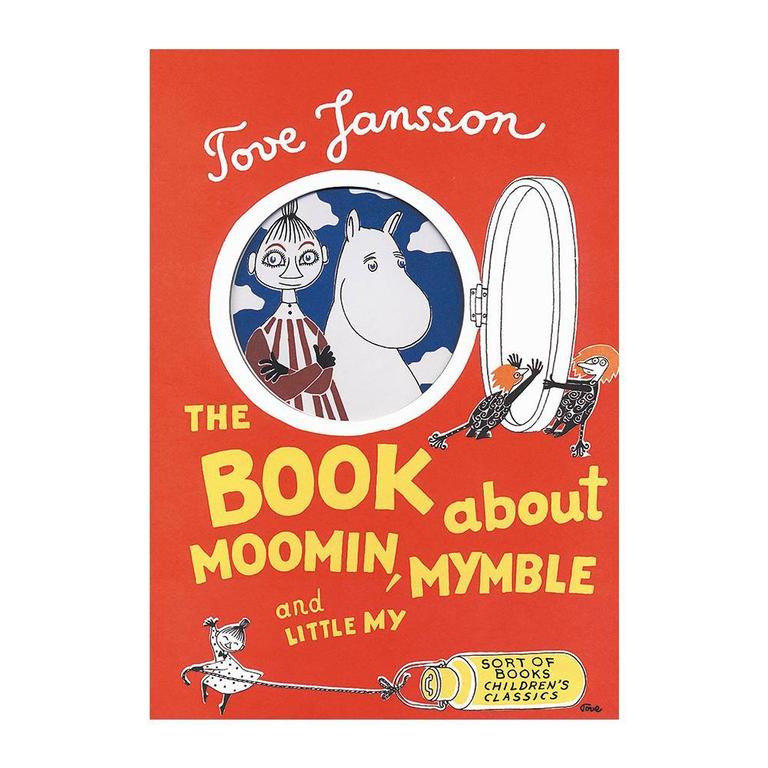 The Book about Moomin, Mymble and Little My “A picture book like no other” – was the first all illustrated Moomin picture book, published in 1952 in Swedish. Die-cut holes and curved papers are presented on nearly every page, making this interactive picture book a masterpiece of paper engineering and color. The Book about Moomin, Mymble and Little My, is one of four different picture books that include; Who Will Comfort Toffle?, The Dangerous Journey, and Villain in the Moominhouse.
The Book about Moomin, Mymble and Little My “A picture book like no other” – was the first all illustrated Moomin picture book, published in 1952 in Swedish. Die-cut holes and curved papers are presented on nearly every page, making this interactive picture book a masterpiece of paper engineering and color. The Book about Moomin, Mymble and Little My, is one of four different picture books that include; Who Will Comfort Toffle?, The Dangerous Journey, and Villain in the Moominhouse.
“A playful and philosophical tale that falls somewhere between Øyvind Torseter’s The Hole (which was possibly inspired by Jansson) and Dr. Seuss, with a touch of ;Edward Goreyesque creaturely magic and Alice in Quantumland mind-bending. Parallels notwithstanding, Jansson’s singular sensibility makes this vintage treasure one of the greatest children’s books of all time, so unlike anything else that ever existed before or since that it inhabits a wholly different yet timelessly welcoming universe.”–Maria Popova, Brainpickings
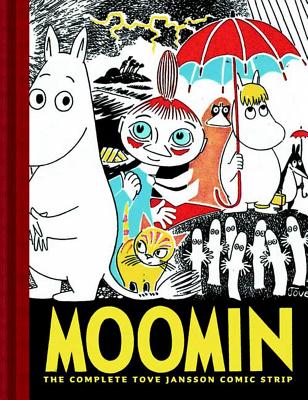 Several options exist for entering Moominland comics. The complete comic series runs into five oversized volumes written by Tove Jansson and five volumes by her brother Lars who took over the series in 1960. Each volume contains 4-5 extended stories and these are the most comfortable editions to read. Volume one of the complete series by Tove Jansson is: Moomin Book One.
Several options exist for entering Moominland comics. The complete comic series runs into five oversized volumes written by Tove Jansson and five volumes by her brother Lars who took over the series in 1960. Each volume contains 4-5 extended stories and these are the most comfortable editions to read. Volume one of the complete series by Tove Jansson is: Moomin Book One.
Two complete collections offer the books in hardcover bindings with a beautiful sturdy slipcase. Each tome also has ephemeral bonus material. These are oversized and hefty editions, but will save the reader about $30 each over buying individual volumes.
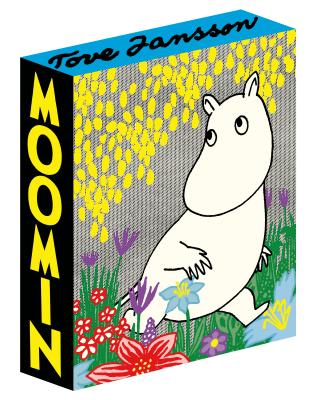 Moomin Deluxe: Volume One by Tove Jansson
Moomin Deluxe: Volume One by Tove Jansson
Read an excerpt from the book HERE.
REVIEWS
Moomin: The Deluxe Anniversary Edition is a compilation that serves longtime fans of Jansson, as much as it should engage newbies, who will undoubtedly have a hard time putting the book down. –Pop Matters; The Hedonistic Nihilism in ‘Moomin’ Comes to the Fore in This Collection
“As a strip, there is nothing really all that much like Moomin…You could read entire anthologies of comic strips that do not contain the sadness and truth that Jansson gets into three panels there. That is ultimately Jansson’s real gift: stuffing so, so much into the tiniest of spaces. I can only imagine how world-expanding that would seem to a child. As an adult, it’s an overstuffed reminder of how horrible it is to crave simplicity.” — National Post
“This single volume edition… comes with several full-page, never-seen-before character studies and sketches, runs to 400 pages, and weighs in at about 2kg… If you love Sniff, Snufkin and the rest, you’ll find it irresistible.” — The Guardian
“To know the Moomins was to know Tove [Jansson]. She poured her wit, dreams and fears into the characters.” — The Economist
“[This is] a surprisingly meaty comic that bears re-reading, and this beautifully produced collection is an excellent way to experience them, whether for the first time or the fortieth.” —Robot 6 / Comic Book Resources
“Scratchy, pen-and-ink sketches and [an] atmosphere of beneficence … [a] mix of disaster and gentle naïveté.” –New York Review of Books: Beyond the Moomins
With a sincere childlike nature and a stoic acceptance of misadventure… Moomin and company — Moominmamma, Snufkin, Stinky and Snork Maiden, to name a few — emerge from each story full of tolerance and quiet humor. –The New York Times
Sixty years after their original serialization – and to celebrate Jansson’s centenary – the fanciful comic strip frolics of the hippo-like Moomins are collected together in one volume, handsome and big enough to hug. –Globe & Mail, Best Books of 2014
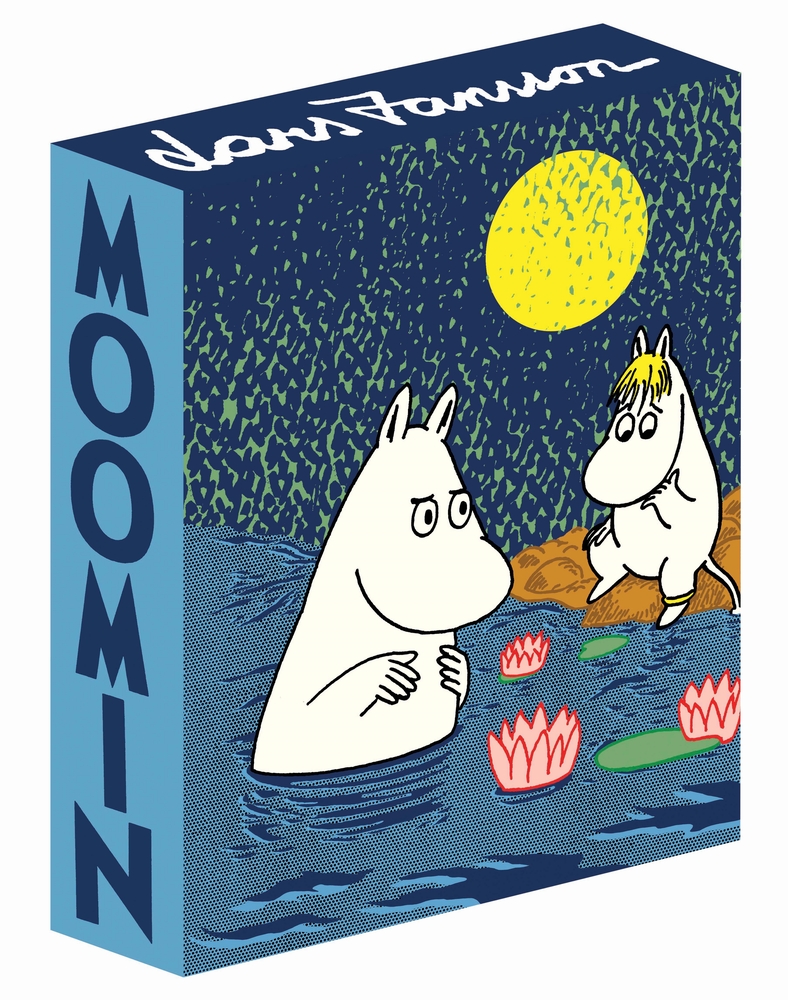 Moomin Deluxe: Volume Two by Lars Jansson
Moomin Deluxe: Volume Two by Lars Jansson
Collected in this volume are the comics created by Lars Jansson, when his sister, Tove, grew tired of drawing a daily strip after half a decade. Her brother Lars had long been involved in the creation of the Moomin strips—he translated them into English for publication. Though he had little knowledge of drawing, Lars took over the daily comic strip. Tove taught him, and after two years of sibling collaboration, Lars authored the strips independently for fourteen years. By the mid-1970s, when the strip was at its height of popularity, the tales of Moominvalley were being syndicated in forty papers worldwide, just as absorbing to adult readers as they were to children. Even today, the stories remain uniquely resonant with readers for more than just their quirky, outlandish appearances. With silly humour, the Moominvalley characters emphasize the importance of community and respecting one’s environment to readers young and old.
![]()
Moomins in Popular Culture
In the recently released collection, Letters From Tove, Jansson writes to her friend Eva Konikoff (1908-1999) a mysterious Russian-Jewish photographer who shared a lifelong relationship with the artist. “I’m your best friend–and I always will be,” writes Jansson. From a letter in 1950, Jansson expresses her tiring of the Moomin commercialization. “I’m starting to feel out of my depth with all this Moomin business. Thank God I don’t have to defend myself publicly in the papers anymore–but there are constant interviews and book events, I make stupid mistakes in commercial agreements, which then have to be sorted out, and the whole thing gets out of hand. Moomin China, Moomin films, in special viewers and what not. And then the Moomin opposition, good grief–all those aggressive types who pick quarrels with me over that poor troll. And caravans of children…” —Letters from Tove, University of Minnesota Press, 2020, p.232
“Although Jansson wrote the Moomin stories for a younger audience, the Moomin stories are filled with deep life philosophical themes and appeal to people of all ages. Life themes such as friendship, change, and the importance of confidence and curiosity, are weaved throughout the story. Despite at first glance appearing to be simple children’s stories, the Moomin stories are quite deep and touch upon core themes of humanity.”
— from Moomins and the Finnish Culture
The Moominvalley Park opened on March 16, 2019 in Hanno City, about 40 kilometers northwest of Tokyo. It is the second Moomin theme park in the world and the first one outside of Finland. Modeled after the universe of the Moomins, the park brings to life the valley where the characters live and play.
Commercialization of Moomin was happening in Europe early on with its popularity. Income from licensing enabled Tove the freedom to paint full-time, rebuild an island retreat and travel wherever she liked. Over 70 manufacturers make Moomin products around the world.
https://www.youtube.com/watch?v=fd54veCcnhk
A Moomin animated television series was produced in 1990 as a collaboration between Japanese-Finnish-Dutch interests. The series was dubbed into English in 1991 for airplay in the UK.
“The series begins with the arrival of spring in Moominvalley. Moomin, along with Little My, Moominpappa and Moominmamma wake up in Moominhouse, while Snufkin also comes back from his south travel on the first day of spring. The first eight episodes create a coherent storyline that is based on the third novel, Finn Family Moomintroll.” —Wikipedia
COLOR COMICS
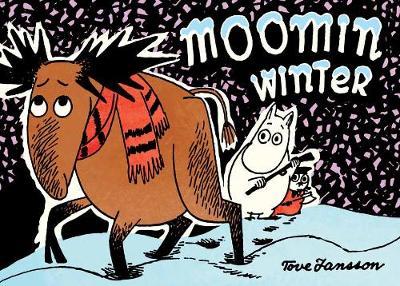
New colorized comics of the original stories have been produced by Drawn and Quarterly. They are beautifully rendered in the color palettes used by Tove Jansson. Each book is a stand alone story of about 48 pages in flexi-binding paperbacks and are a small oblong size, easy to hold.
Moomin Winter As the Moomins prepare to hibernate through what is going to be the worst winter yet, several unwelcomed guests take advantage of the Moomins generosity and keep the family awake throughout the long winter. Their quirky but needy guests prevent the Moomins from hibernating and the chaos only increases with the arrival of a little nibling determined to find out everyone s secrets. One by one, the nibling sees what the Moomins and each of their houseguests do when no one else is looking. But everyone is ashamed of what the nibling has seen and is determined to keep their secret activities, well, a secret!
Moomin and the Brigands Moomin’s pushy relations have come to stay, and in the process of getting them out, he unwittingly embarks on a quest for fame and fortune with his sly friend Sniff. But it’s much harder to get rich than either of them expects, whether it’s through selling rare creatures to the zoo, using a fortune-teller to find treasures, or making modern art. Through a stroke of luck, however, Moomin meets the love of his life, Snorkmaiden, and with her help he finds the self-confidence he needs to get his house back. The iconic first Moomin comic strip by Tove Jansson, Moomin and the Brigands is a thrilling introduction to the vibrant inhabitants of Moominvalley we’ve come to know and love.
![]()

